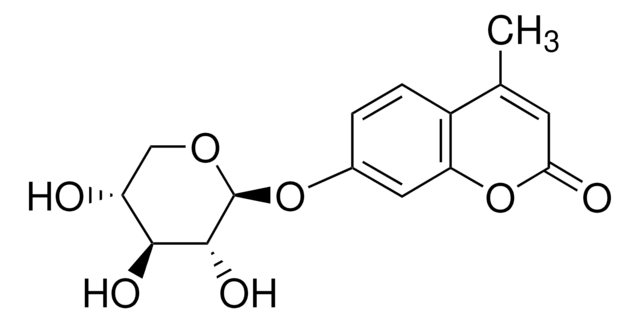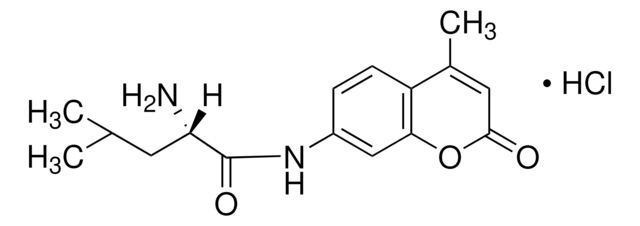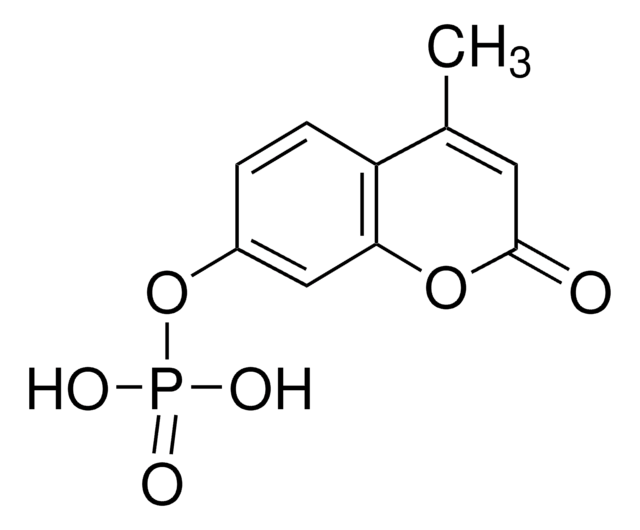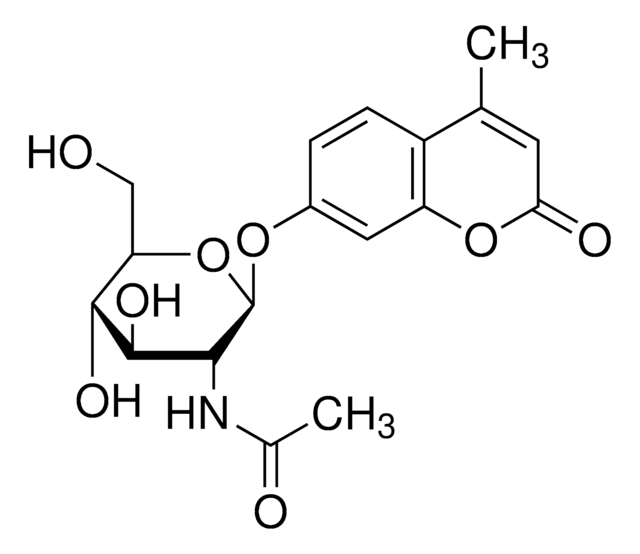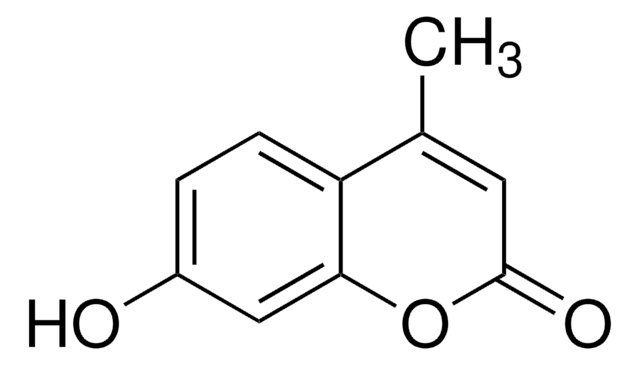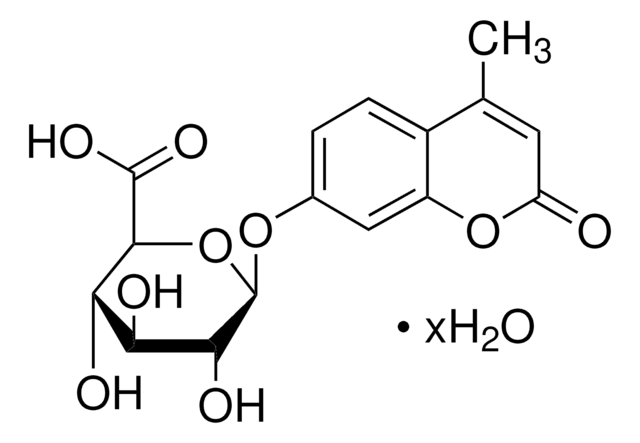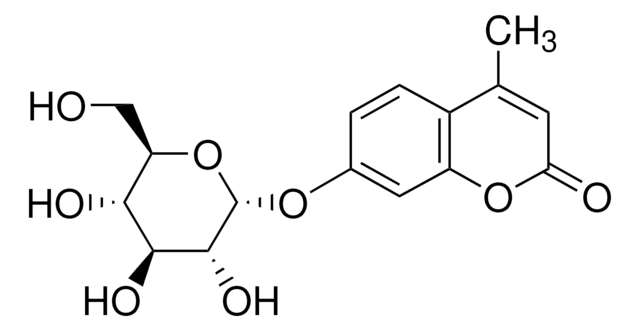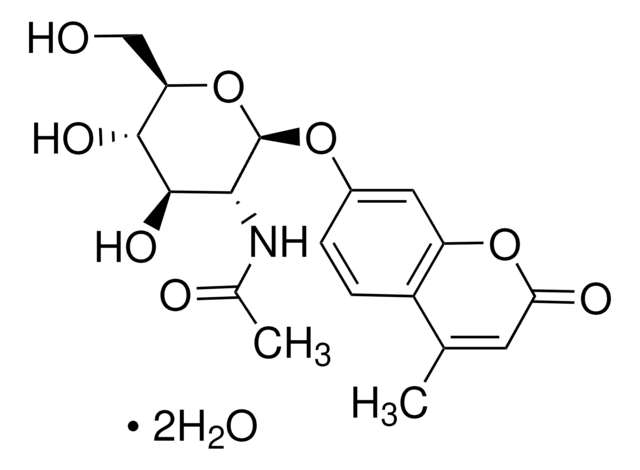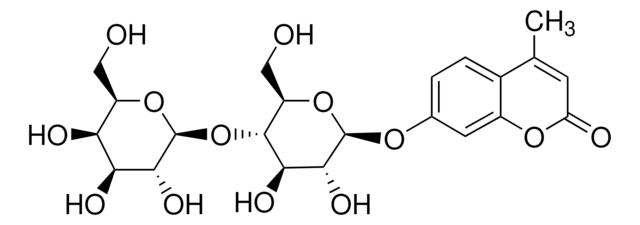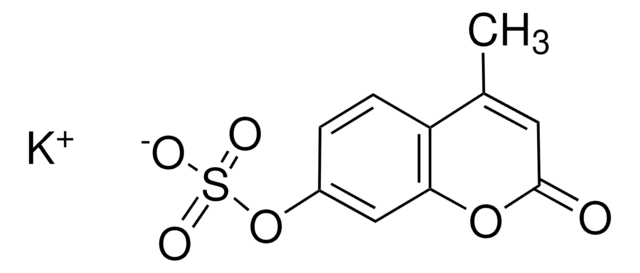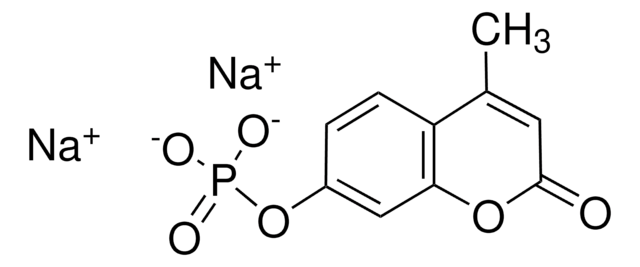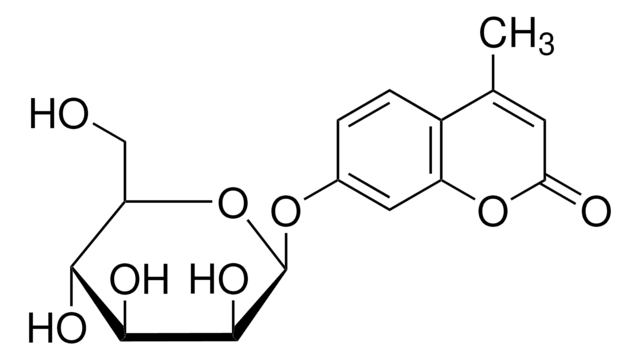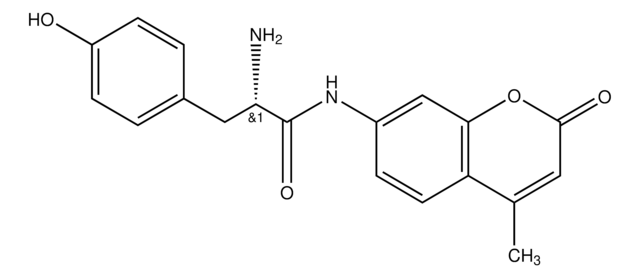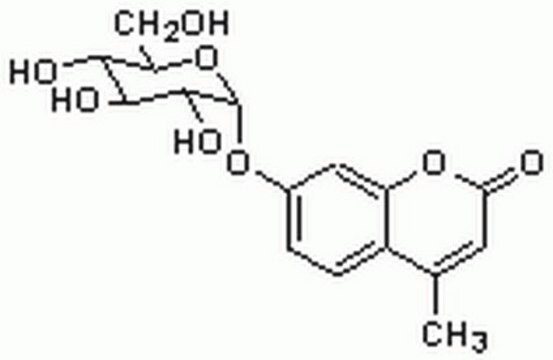Kluczowe dokumenty
M6018
4-Methylumbelliferyl β-D-cellobioside
glucanase substrate, fluorogenic, ≥98.00% (TLC), powder
Synonim(y):
4-Methylumbelliferyl beta-D-cellobioside
About This Item
Polecane produkty
Nazwa produktu
4-Methylumbelliferyl β-D-cellobioside, glucanase substrate
Poziom jakości
Próba
≥98.00% (TLC)
Formularz
powder
rozpuszczalność
water: 19.60-20.40 mg/mL, clear, colorless to faintly yellow
temp. przechowywania
2-8°C
ciąg SMILES
CC1=CC(=O)Oc2cc(O[C@@H]3O[C@H](CO)[C@@H](O[C@@H]4O[C@H](CO)[C@@H](O)[C@H](O)[C@H]4O)[C@H](O)[C@H]3O)ccc12
InChI
1S/C22H28O13/c1-8-4-14(25)32-11-5-9(2-3-10(8)11)31-21-19(30)17(28)20(13(7-24)34-21)35-22-18(29)16(27)15(26)12(6-23)33-22/h2-5,12-13,15-24,26-30H,6-7H2,1H3/t12-,13-,15-,16+,17-,18-,19-,20-,21-,22+/m1/s1
Klucz InChI
PRTGXBPFDYMIJH-MKQZUAMYSA-N
Powiązane kategorie
Zastosowanie
- to assay cellulase from A. niger
- to determine the extracellular enzyme activity for 1,4-β-cellobiohydrolase
- to assay the activity of bound enzyme, endoglucanase I (EGIc) Trichoderma reesei class II hydrophobins (HFBI)
Działania biochem./fizjol.
Kod klasy składowania
11 - Combustible Solids
Klasa zagrożenia wodnego (WGK)
WGK 3
Temperatura zapłonu (°F)
Not applicable
Temperatura zapłonu (°C)
Not applicable
Środki ochrony indywidualnej
Eyeshields, Gloves, type N95 (US)
Wybierz jedną z najnowszych wersji:
Masz już ten produkt?
Dokumenty związane z niedawno zakupionymi produktami zostały zamieszczone w Bibliotece dokumentów.
Klienci oglądali również te produkty
Nasz zespół naukowców ma doświadczenie we wszystkich obszarach badań, w tym w naukach przyrodniczych, materiałoznawstwie, syntezie chemicznej, chromatografii, analityce i wielu innych dziedzinach.
Skontaktuj się z zespołem ds. pomocy technicznej
